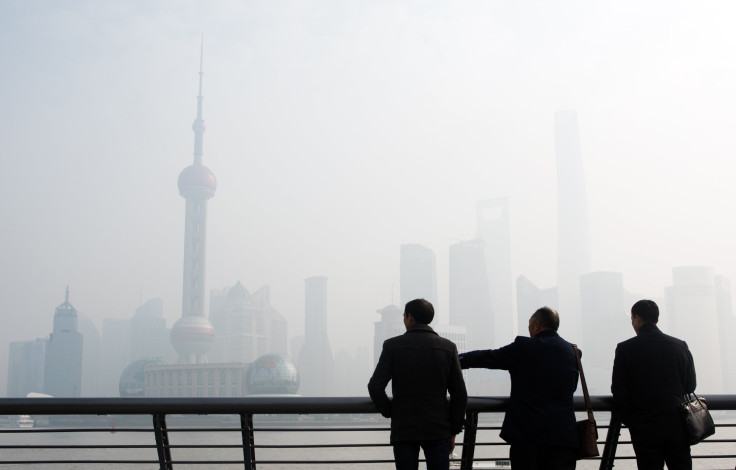China Air Pollution: Smog Red Alert Spurs Factory Closures In Beijing

Over 2,000 factories in and around Beijing were ordered to either reduce production or shut down entirely Monday as part of an emergency response plan to reduce a thick haze of toxic smog over the city. The measures come just days after the government issued its second environmental red alert, the highest level in a four-tier warning scale, which also prompted school closures and traffic restrictions.
According to the U.S. embassy’s air quality monitor in Beijing, the concentration of PM2.5 particles -- considered the most detrimental to health -- stood at a “very unhealthy” level of 156 micrograms per cubic meter Monday. In Shanghai, where authorities have also called for a halt in construction and demolition works in central areas of the city, the figure stood at 144 micrograms.
The World Health Organization’s maximum recommended limit for PM 2.5 particles is 25 micrograms per cubic meter over a 24-hour period.

In addition to Beijing and Shanghai, at least 30 other cities in northern China are also shrouded in a blanket of thick smog, China’s environmental ministry reportedly said Sunday. According to officials from China’s meteorological department, cited by local news agencies, thick smog will continue to blanket cities in northern China at least until Tuesday, when the latest red alert -- the second one in just over two weeks -- will be lifted.
China is currently the world's biggest emitter of greenhouse gases. Some studies suggest that 1.4 million deaths every year in the country can be attributed to air pollution.
In order to get a handle on the situation, the Chinese government recently announced that it plans to reduce hazardous emissions from coal-fired power plants by 50 percent over the next five years. However, overall emissions are not expected to peak before 2030.
“The industrial development of this region has far exceeded the capacity of the environment,” Ma Jun, director of the Beijing-based Institute of Public and Environmental Affairs, told the South China Morning Post. “We must strictly enforce the Environmental Law, closing down the polluters that fail to meet the standards.”
© Copyright IBTimes 2025. All rights reserved.






















